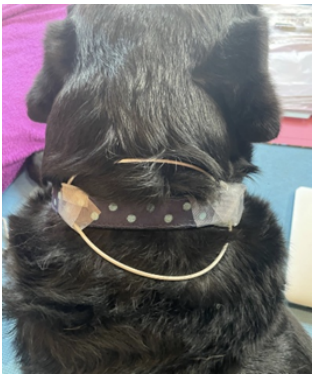Laurie's Blogs.
Aug 2023
PEMF and Osteoarthritis

A friend notified me to a paper on PEMF and dogs.
Here’s the title citation…
Sprunks TE, McLeod KJ, Staelin R. Pulsed Shortwave Electromagnetic Field Therapy Increases Quality of Life in Canines with Symptoms of Osteoarthritis.
Source: https://www.bielcorp.com/veterinary/ (accessed Aug 2, 2023).
So, right off the bat, you can see that this is not (yet?) a published article. I can’t tell if it was at some point a symposium presentation either. Thirdly, this paper is published as a white paper on a website of a company that sells PEMF technology. I don’t know what year the study was conducted, however, the most recent of the references is 2022 – so I will assume it’s recent study. What we can say then, is that this does not appear to be a peer reviewed paper, but let’s see what it says, never the less.
The study was randomized, blinded, placebo-controlled 14-day study of 60 dogs with veterinarian-diagnosed osteoarthritis in at least one limb joint. The device used in this study was Biolectronics’ model 088 (Bioelectronics Corporation, Frederick, MD, USA). Placement of the device was intended to target the vagus nerve and as such the device was taped to the dog’s collar over the back of the neck. The device was worn 24 hrs / day during the study period. (Note: the paper is calling the device a pulses shortwave electromagnetic field therapy device, which is synonymous to what many North American’s, and others know the device to be called – pulsed electromagnetic field therapy)
During the study, no changes were made to medications or other therapies (i.e. hydrotherapy) being provided.
They used an quality of life subjective assessment tool – called the BEAP, which asks questions regarding Breathing, Eyes, Ambulation, Activity, Appetite, Attitude, Posture, and Palpation and a digital goniometer to measure passive range of motion.
Results:
During the study, 11 of the study dogs chewed and destroyed the device (7 in the placebo group and 4 in the treatment group). As such 49 dogs completed the study.
The BEAP scores for the placebo group remained essentially constant (only one placebo dog recorded any change in behavioral signs over the course of the study). The treatment group demonstrated an average of a 45% decrease in discomfort associated behaviours according to the same measurement tool, which was highly significant. In regards to PROM, the treatment group experienced an increase of 5.51 degrees (on average) relative to the placebo group.
And the Conclusions:
PSWT applied at the cervical spine level, in order to expose the vagus nerve, may
have the potential to significantly improve quality of life for dogs and other small domestic
animals with OA.
My thoughts?
Well, I like the findings. It is however, unfortunate that the BEAP scoring system was used, as it is less robust of a scoring tool than other scoring systems that have been validated in research, and digital goniometry, especially in dogs, does not have much in the way to validate it’s use as a reliable outcome measure either. That being said, these two measures showed improvements in one group and not the other. That in itself, as a randomized, blinded trial, should say something! I also like the fact that the device could be positioned at a distance to the target site and presumably having an effect via targeting the vagus nerve!
Give it a whirl as a way to treat, and let me know what YOU find!
Until next time… Cheers!
Laurie


